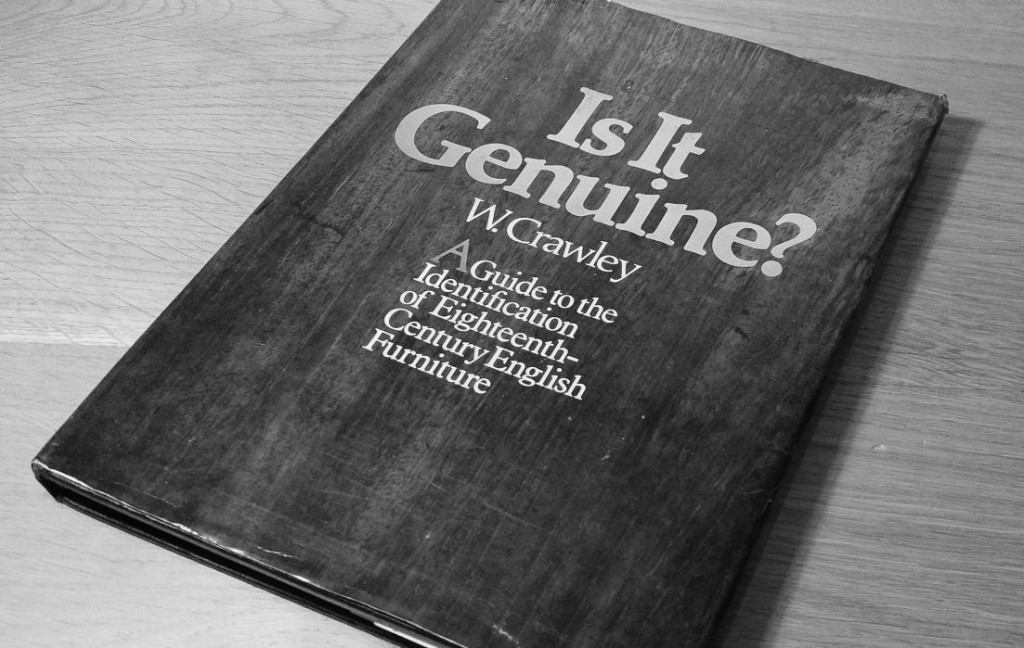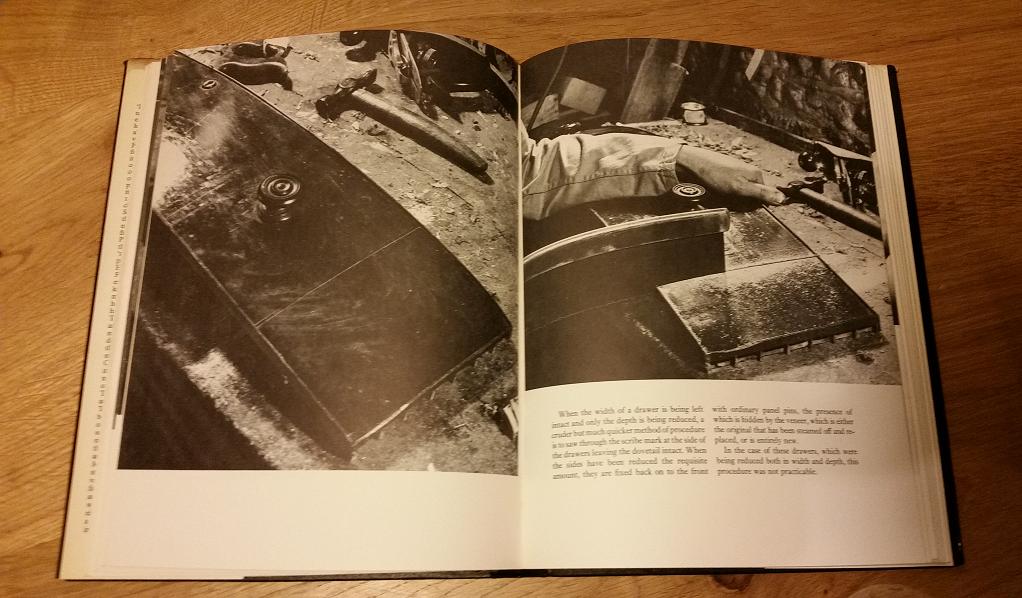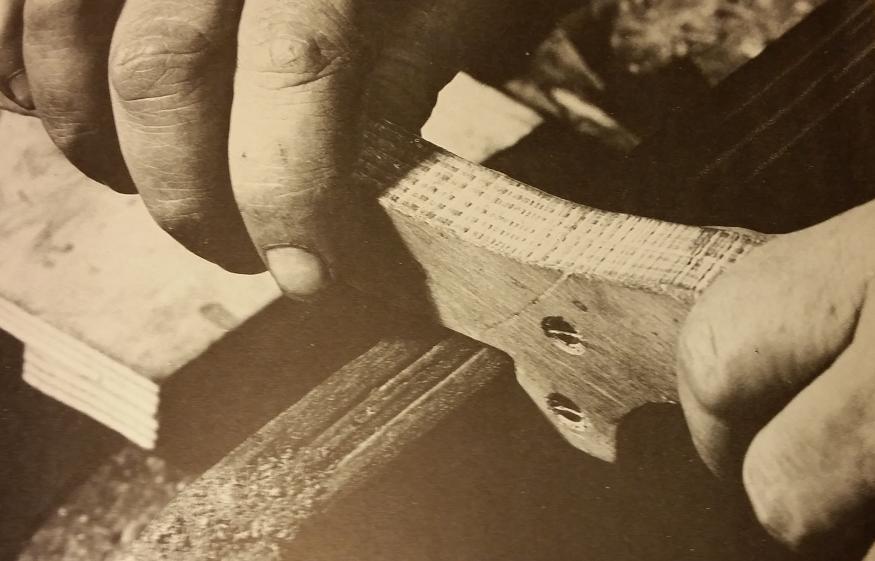We may receive a commission when you use our affiliate links. However, this does not impact our recommendations.
One of the things I enjoy in life is the experience of the under promise and the over delivery. I bought “Is It Genuine” (1971) while searching for good information about 18th-century furniture. I don’t worship what the 18th century has to offer but at its core it represents what I feel is the pinnacle of hand-powered woodworking. It’s a unique period of the pre-Industrial Revolution world that relied on refined and practiced skills that were relatively abundant. Anything I can learn about the woodworking methods, rhythm and structure of that time is gold for me. I took a punt on this book; at £0.01p with a couple of pounds postage there was nothing to lose. My expectation was for a rather bland read that I would use as reference book. How wrong I was.
The trump card for this book is the author, a Mr W. Crawley. Rarely do you find such a blend of experience both academic and practical in any subject and it’s rewarding to find it combined into a subject I enjoy. The author started his seven-year apprenticeship in 1934 to a firm of Furniture Makers that typically undertook repair and restoration of 18th century furniture and on occasion making copies. How his career develops gives a wonderful insight into the nitty gritty of his world and the “naughty” pieces he hopes to educate the reader about.
And so that leads us to the main aim of the book, to help the reader work out if an 18th century piece of furniture is genuine or a fake. A couple of examples to raise the eyebrows “…Of a man I knew, made over three hundred Chippendale chairs and nearly two hundred Chippendale wing chairs (over a 9 year period) which were sent to sales and salerooms all over the country. These chairs, all of them “genuine” fetched enough in this short time for him to retire. His last set of six single chairs and two arm chairs cost him £120 to make and fetched £3800…” and “…Dealers have been known to take a three-month lease of an empty house that is up for sale, furnish it with their “antiques” (putting lots of books onto the piano, for instance, so that the castors make deep marks in the carpet and look as if they had been in that position for years), and then hold a sale of the “contents of a private house”. I think the term “naughty” is being rather kind! That said this is a record of early to mid 20th century practice, not the present day.
I’m sure I don’t need to discuss the ethics of fakes, it is simply fraud. But with so much time passed between the publication of this book to the moment I read it (some 40 years) it almost has an element of a crime novel!
Even though the book’s aim was to educate the buyer of 18th century furniture, for the woodworker it provides valuable insights into proportion, detailing and hardware. You even get to see the “Birth of an Antique,.” where the author takes a rather beat up old Victorian chest of drawers and reduces it into a very finely proportioned Sheraton style piece that can be seen below. The methods shown in the photos are all practical and would of course lend themselves to modern “upcycling.” The other huge benefit for those wanting to make good reproduction work is because you know what to look for in a genuine piece you can work those details into your design. Not to fool of course, but to ensure a successful reproduction.
Perhaps the most valuable part of the whole book is how it engaged me. I learn much more readily when a subject is enlivened by the teacher and I found myself hanging onto every word and eager to hear about the next audacious “naughty” piece or of how a chest of drawers is turned in to a kneehole desk while at the same time making mental notes of typical drawer details and hardware placement. I really did feel as if I was sat having a conversation with the Mr Crawley sharing a drink and soaking up his experience.
So even if old furniture is not your thing give it a try. Mr Crawley was a gifted and experienced woodworker who provides a semi-biographical account of his life around woodworking and furniture that engages, educates and entertains. And one thing is for sure – you can’t fake that.
— Graham Haydon
Here are some supplies and tools we find essential in our everyday work around the shop. We may receive a commission from sales referred by our links; however, we have carefully selected these products for their usefulness and quality.














What was 3 dollars is now $95 and up. Looks like a great book but is it for that money?
Another title for those interested in English antiques is The Gentle Art of Faking Furniture. I believe the author is Cesinski.
I ordered a used copy through Amazon for $3 plus $4 S&H. The used books are sold by various book retailers, but the order is processed through the Amazon account. There was a large price range depending upon condition.
Looks like it would be a great read. Is this book available as a reprint or say a GoogleBooks scan?
I’ll keep an eye out for it in my travels to used book shops. It might be great if PW offered a reprint of this book at some point.
Take care,
-Bill
I had no idea Mr. Crawley would have time to apprentice and also to author such a book – what with being Lord of the Manor and running the Abbey and grounds and putting up with the insipid staff below stairs.